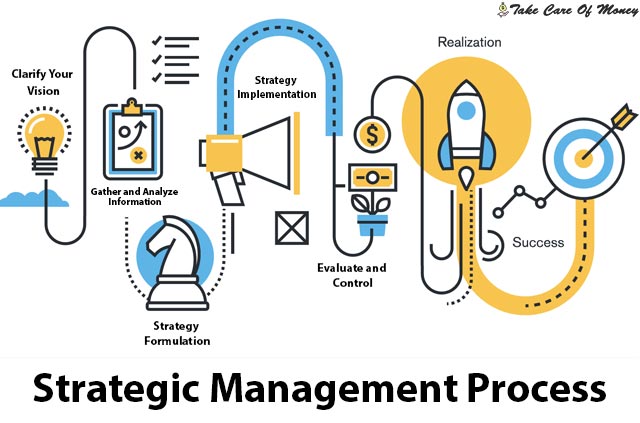Table of Contents
The strategic management process is more than just a set of rules to follow. It is a philosophical approach to the business. Management has to think strategically first, then apply that thought to a process. The strategic management process is best implemented when everyone within the company understands the strategy. The five stages of the process are to establish objectives, analysis, strategy formation, strategy implementation and strategy monitoring.
Clarify Your Vision
The purpose of setting goals is to clarify the vision for your business. This stage consists of identifying three key facets. First, it defines short and long term objectives. Second, identify the process of how to achieve your goal. Finally, customize the process for your staff, give each person a task with which they can succeed. Keep in mind during this process your goals so that they are detailed, realistic and match the values of your vision. Typically, the last step in this stage is to write a mission statement that briefly communicates your objectives to your shareholders and your staff.
Gather and Analyze Information
The analysis is a key stage because the information gathered in this stage will form the next two stages. Here, gather so much information and relevant data to achieve your vision. The focus of the analysis must be to understand the needs of the business as a sustainable entity, its strategic direction and identify initiatives that will help your company grow. Examine any external or internal problems that may affect your goals and objectives. Be sure to identify the strengths and weaknesses of your organization as well as any threats and opportunities that may arise along the way.
Strategy Formulation
The first step in forming a strategy is to review the information gained by completing the analysis. Determine what resources the company currently has that can help achieve the defined goals and objectives. Identify any area in which the company has to look for external resources. The problems that the company has have to be prioritized for their importance to succeed. Once prioritized, start formulating the strategy. Because economic and business situations are fluid, it is critical at this stage to develop alternative approaches that address each step of the plan.
Strategy Implementation
A successful implementation of the strategy is critical for the company’s project. This is the action stage of the strategic management process. If the general strategy does not work with the current structure of the company, a new structure has to be installed at the beginning of this stage. Everyone within the organization has to be clear about their responsibilities and duties, and how that fits in with the overall objective. In addition, any resource or financing for the project has to be secured at this point. Once the financing is in place and the employees are ready, execute the plan.
Evaluate and Control
The evaluation and control actions of a strategy include performance measures, a consistent review of internal and external problems and take corrective actions when necessary. Any successful evaluation begins with defining the parameters to be measured. These parameters have to reflect the objectives established in stage 1. Determine your progress by measuring the actual results against the plan. Monitoring internal and external problems will also allow you to react to any substantial change in your company’s environment. If you determine that the strategy is not leading the company towards its objective, take corrective actions. Because internal and external problems are constantly evolving, any data gained at this stage has to be retained to help with any future strategy.
